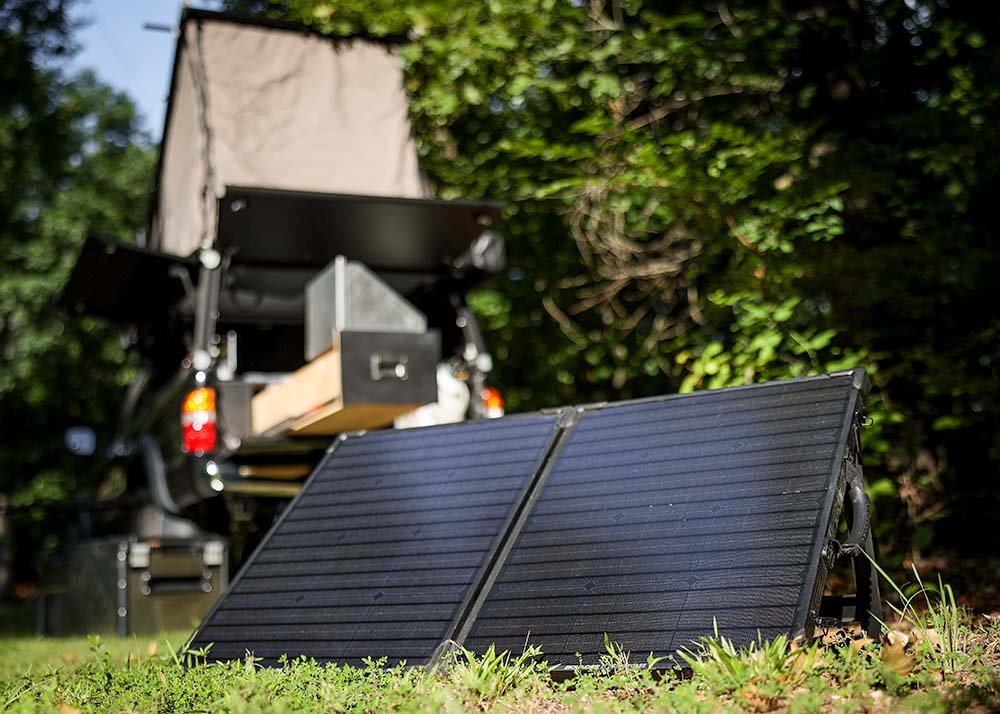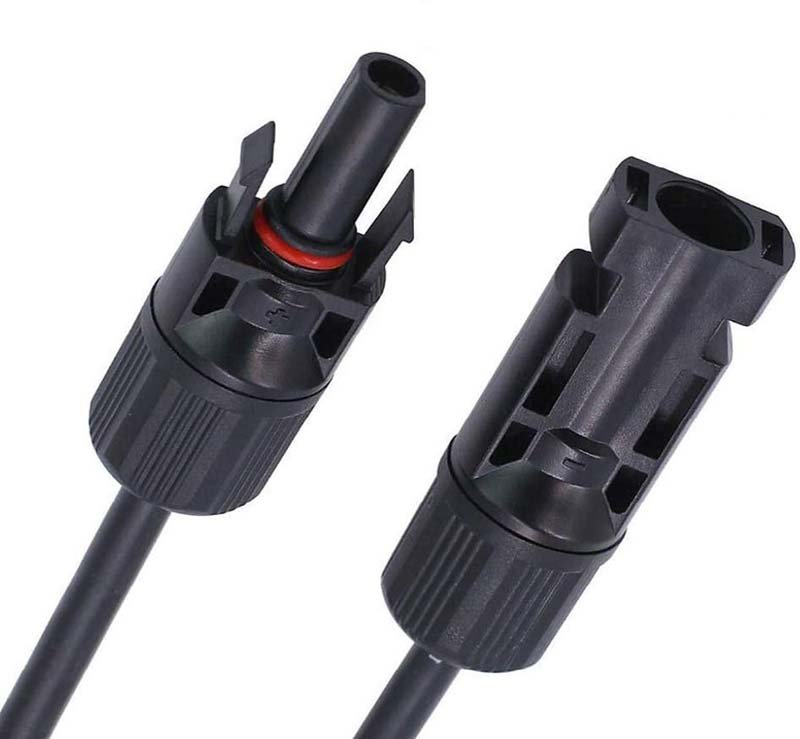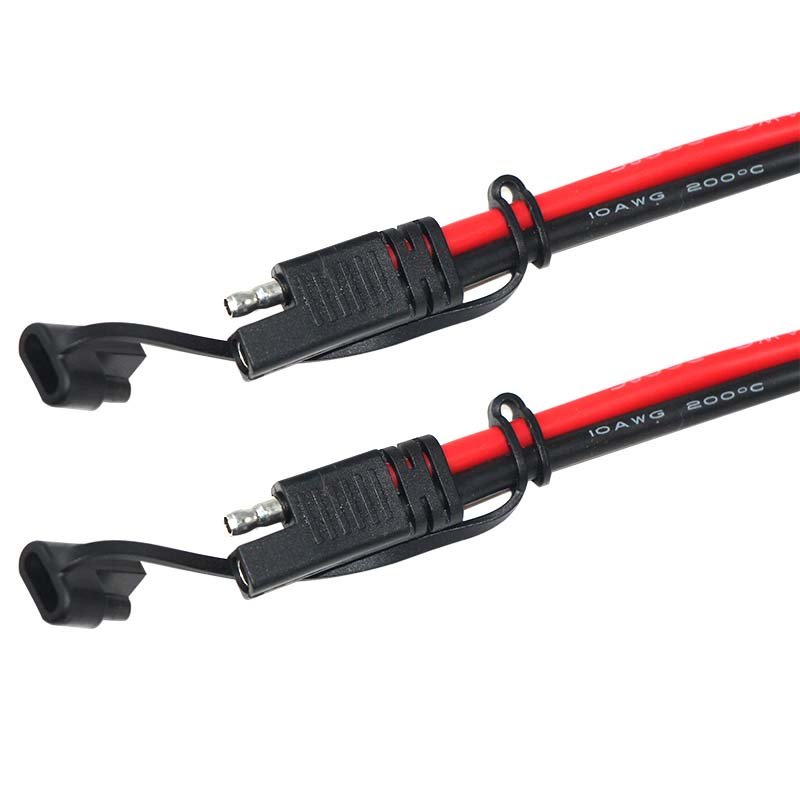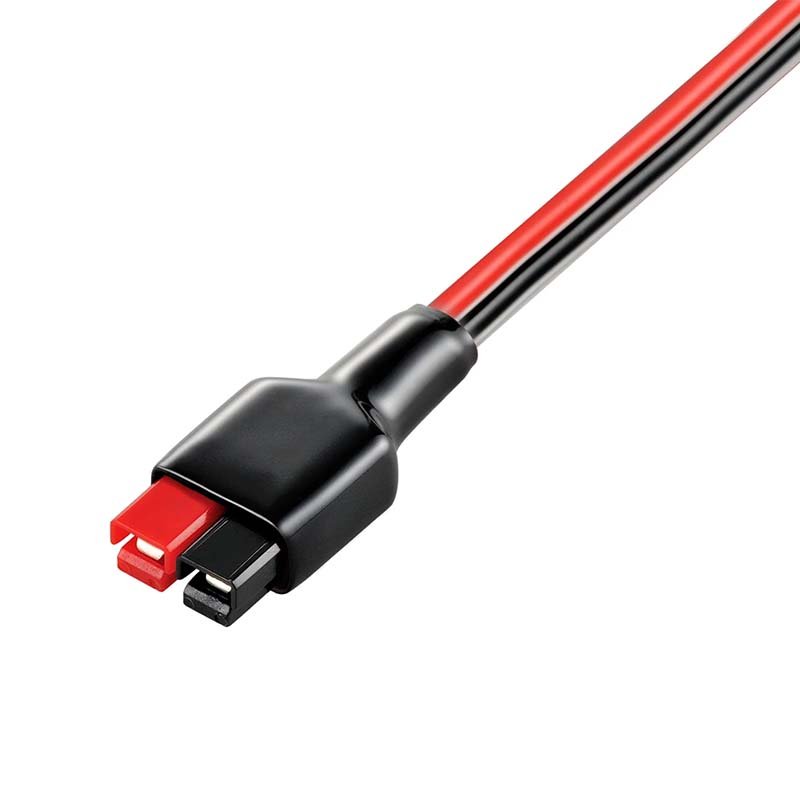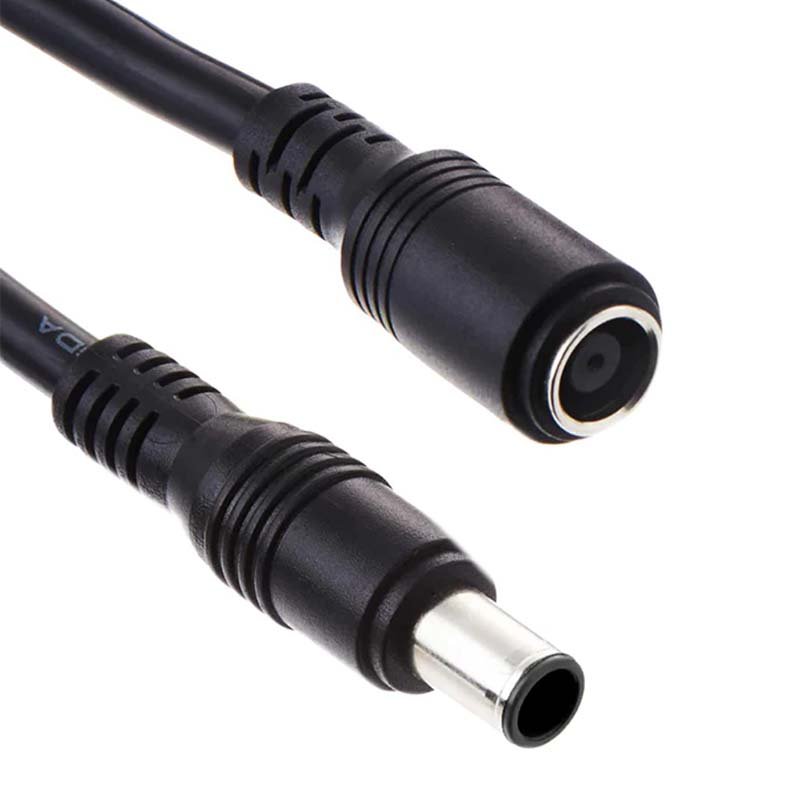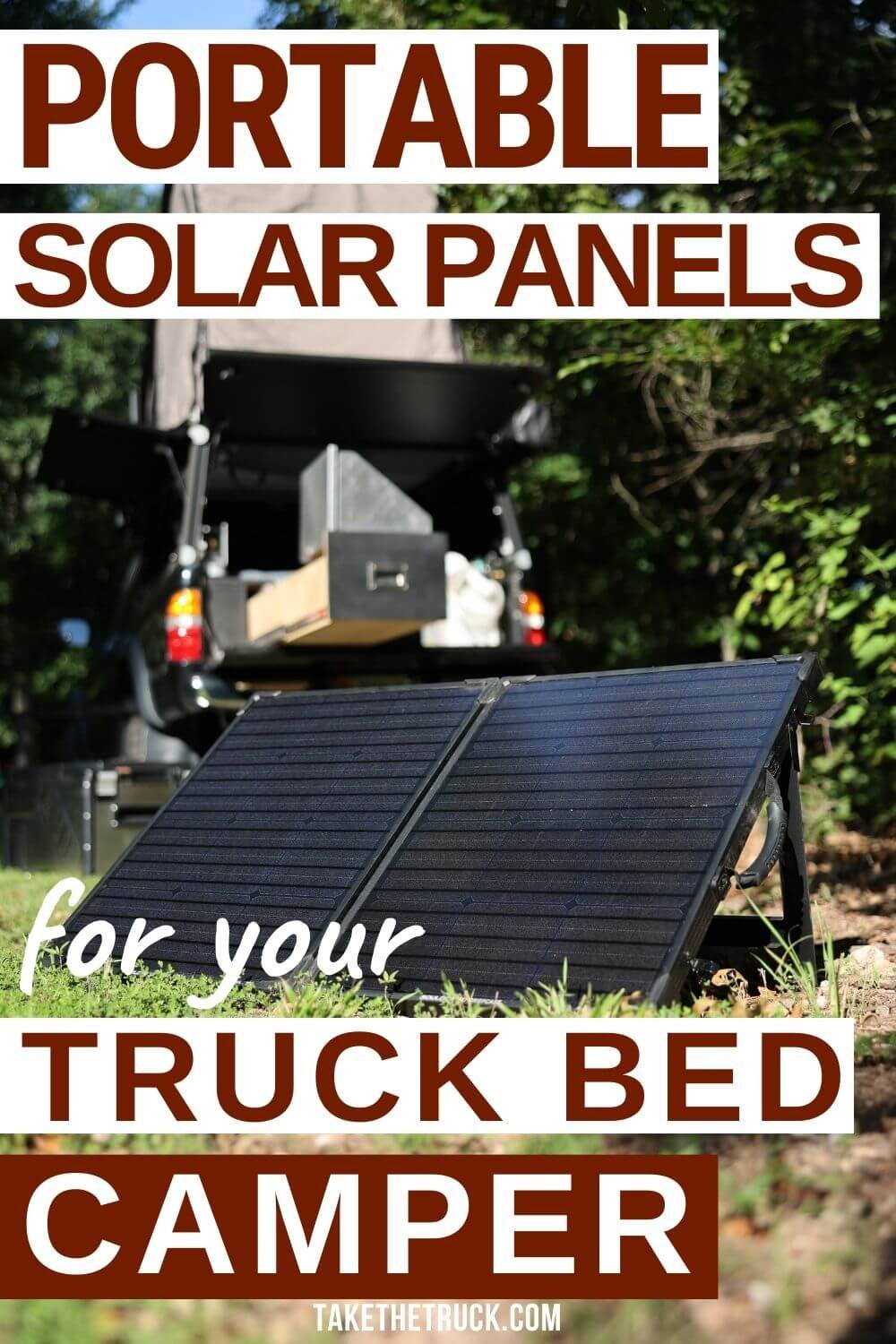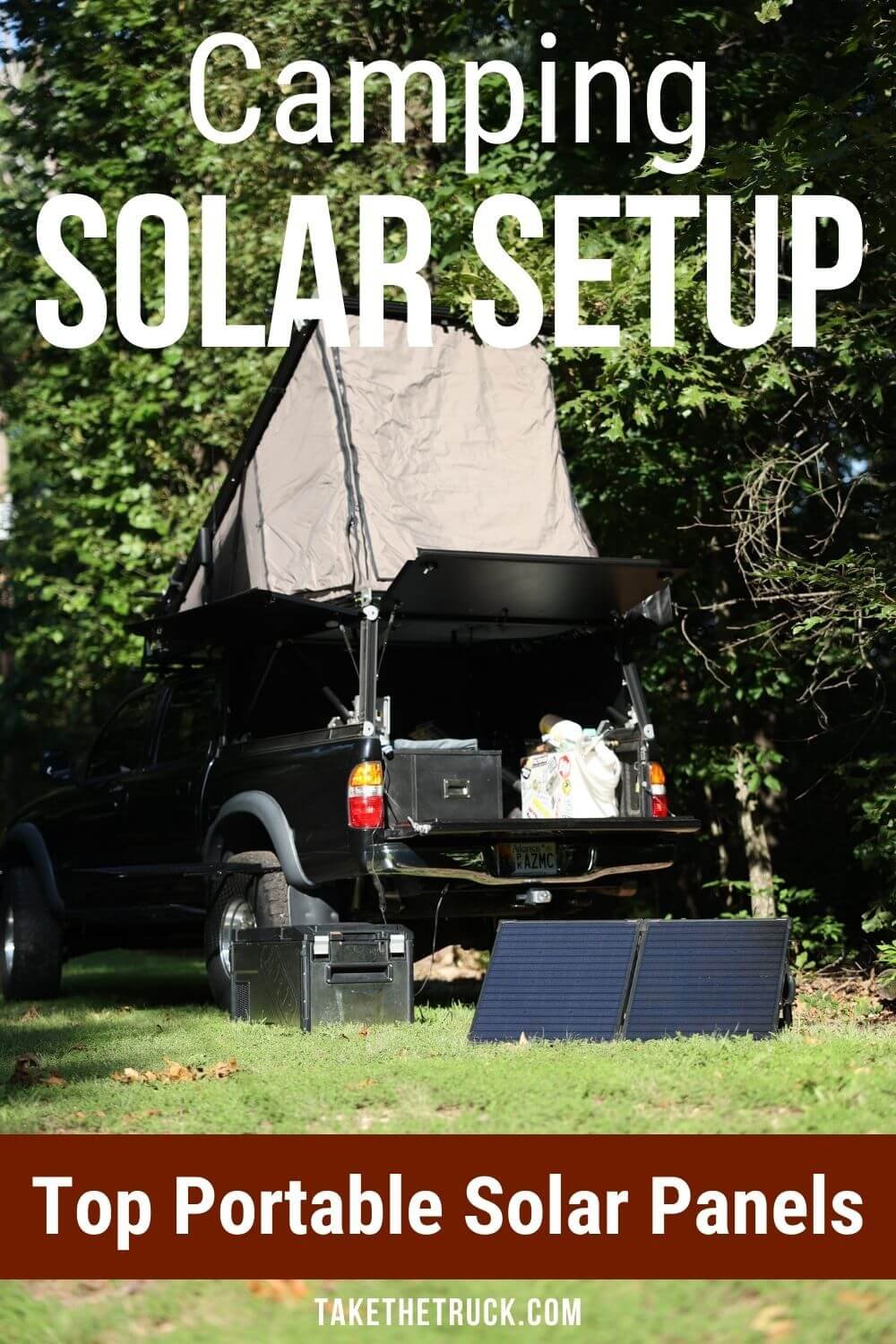How to Choose the Best Camping Solar Panels
Camping solar panels can help power your adventures whenever you're off the grid, but with so many options on the market, choosing one that meets your needs, budget, and adventure can be tricky.
In this guide we’ll cover everything you need to choose the best camping solar panel for your camping solar setup.
How Camping Solar Panels Work
Camping solar panels are made up of multiple non-chemical photovoltaic elements (called solar cells) that convert sunlight into electricity. Each of these solar cells has two conductive layers, in which two different types of silicone are sandwiched between - one with extra electrons, and one with space for electrons.
When you're camping, sunlight hits your solar panel, sending photons slamming into the solar cells, which in turn knocks one of the extra electrons loose. When these freed electrons make their way over to the silicone layer with space for the electrons, this creates a positive charge on one side and a negative charge on the other.
The solar panel’s cells direct this movement of electrons, capturing the energy produced as they move. While the amount of energy captured by each individual solar cell is small, when several are chained together, it can create a usable and renewable amount of electricity in the form of a camping solar panel.
Factors to Consider when Choosing the Best Portable Solar Panels for Camping
Power Output
Due to the differences in camping solar panel efficiency (discussed more below), there are two ways to look at the power output of portable solar panels for camping.
The first, and most obvious, is the manufacturer’s stated rating (e.g., this is a 220watt panel). This stated rating is usually the absolute-best-case-scenario output.
The second is the actual real-world output, which is typically 70-90% of this amount due to inefficiencies in the cells, components, wiring, etc.
Solar Panel Efficiency
The efficiency of consumer-grade solar panels averaged less than 10% in the mid-1980s, increasing to around 15% by 2015, and is currently approaching 25% with state-of-the-art panels. Most camping solar panels will fall in the 15-22+% range.
There are two primary varieties of silicon used in camping solar panels: Monocrystalline and Polycrystalline. While there are pros and cons to each (outlined below), we highly recommend using a monocrystalline-based solar panel for camping if your budget allows.
Polycrystalline - comprised of melted together fragments of multiple silicone crystals
Pros:
More Budget Friendly
Cons:
Less efficient, so you need a larger panel (or multiple panels) to harness the same amount of electricity
Bluish hue of the silicon is not as aesthetically pleasing
Generally shorter lifespan
Monocrystalline - made of a single silicone bar and each cell is comprised of a single silicon crystal
Pros:
More efficient
More compact
Black color of the silicon is more aesthetically pleasing
Generally longer life expectancy
Cons:
More expensive
Packed Size and Portability
Depending on your needs, a camping solar panel’s size and portability (weight) will be an important factor to consider. Unless you’re planning to mount your camping solar panels permanently to your vehicle, you’re going to want to use the most compact portable solar panel for your camping setup that can still meet your camping power needs.
Camping Solar Panel Durability
This is a bit more subjective when looking at a variety of portable solar panels for camping, but you can look at features like the construction quality, materials, and waterproofing to get a feel for how durable a particular camping solar panel will be.
Extra Features
These are features that aren’t dealbreakers, but are things to keep in mind as your looking for the best portable solar panel for your camping needs.
Bi-facial Panels
Bi-facial portable solar panels have a primary panel set on the sun-facing side and a secondary set on the back side to collect non-direct light reflected off the ground surface. This generally increases a panel’s overall efficiency by 5-15%.
USB charging
If you’re looking to charge devices directly off a camping solar panel without a camping power supply you may want to find one with usb outputs built in to make this easier (although we would never rule out a solar panel based on this feature, it’s something to note)
Charge Controller (Included vs Sold-Separately)
A solar charge controller regulates a camping solar panel’s output voltage to something that is safe and acceptable to use with certain batteries. Each battery type (lead-acid, AGM, lithium) has a different optimal charging voltage, and the charge controller ensures the power from your camping solar panel is being deliveredl to the battery within these optimal ranges. Some panels include a charge controller, and some don’t.
As a rule-of-thumb MPPT controllers are more efficient (and thus more expensive) than PNW controllers. So you may or may not prefer to source one separately to make the most of your camping solar panel’s output.
**Note that if you’re using a solar generator as your camping power storage solution (more on this below), the charge controller is built into the solar generator, and you’ll just need to make sure your portable solar panel is compatible with the manufacturer’s input restrictions of your solar generator.
Waterproofing
Most portable solar panels for camping will have some form of water resistance rating. You can get familiar with the rating system when choosing a camping solar panel for your setup, but generally IP68 is the rating we’d recommend looking for if you intend to ever (accidentally) leave your portable solar panel out in the rain. (Note that your wiring connections and power storage device should also be rated appropriately if you’re the accident prone type 😅)
Kickstand
Some camping solar panels will include an adjustable kickstand to help keep the panel in an optimal 90-degree position to the sun. Some portable solar panels for camping even include a solar angle guide to make this even easier (though you can add one to any panel you want too - see the camping solar panel accessories we highlight below).
Cost
Obviously price is a consideration on any purchase, and camping solar panels are no exception. Generally the higher the output & efficiency, the higher the quality & durability, and the more features a camping solar panel has - the greater the cost.
How to Store the Energy from your Camping Solar Panel
Solar panels are only part of your Camping Power Supply Setup and to help you truly get your head around this subject, we’ve got a 3-part camping power series:
Portable Camping Power Part 1: Electrical Terms and Principles Made Simple
Portable Camping Power Part 2: Determine Your Power Supply Needs
Portable Camping Power Part 3: Selecting a Camping Power Supply
Over the years we’ve personally used everything, from complex dual battery setups, to solar generators, to our latest lithium overland battery setup, and each has had its pros and cons. So it’s worth taking some time to research and shop around in order to see which option is right for you and your camping needs, before jumping into a camping power supply.
The Best Portable Camping Solar Panels [Updated January 2025]
We’ve been watching the camping solar panel industry for almost a decade waiting for the time when the trade-offs between cost, output, and efficiency of portable solar panels hit a tipping point that made them make sense for our overland camping needs.
And thankfully, camping solar panels make more sense now than ever before!
Below you’ll find 11 of the best portable solar panels for camping that are currently on the market, grouped by category so you can select one that’s right for your needs. Real-world output and cost-effectiveness were a primary criteria of our assessment of these camping solar panels.
*(This post contains affiliate links. This means we may receive a small commission, at no additional cost to you, if you make a purchase through a link. See our full disclosure.)
Overall Best Camping Solar Panels
These camping solar panels offer the best overall trade-off between price, efficiency, output, size, and portability with a high level of waterproofing that makes them great for whatever your camping trip throws at you.
ECOFLOW 160W Camping Solar Panel
Packed Size: 26.8” x 16.5” x 1”
Weight: 15lbs 7oz.
Solar Cell Type: Monocrystalline
Efficiency: >21%
Max Output: 160W, 8.8A, 18.2V
Panel Connector Type: MC4
Features: IP68 Waterproofing, built-in stand
ECOFLOW 220w Bi-facial Camping Solar Panel
Packed Size: 32.3” x 19.7” x 1.3”
Weight: 20lbs 14oz.
Solar Cell Type: Monocrystalline
Efficiency: >22%
Max Output: 220W + 155 (rear facing), 12A, 18.4V
Panel Connector Type: MC4
Features: IP68 Waterproofing, built-in stand
Most Budget Friendly Portable Camping Solar Panel
Our pick for the most budget-friendly camping solar panel is the AllPowers SP033 200w. Typically priced just a bit more than a $1/watt-output it’s an incredible value compared to most on the market.
ALLPOWERS SP033 200w Camping Solar Panel
Packed Size: 25.6” x 20.3” x 2.4”
Weight: 13lbs 14oz.
Solar Cell Type: Monocrystalline
Efficiency: 19-22%
Max Output: 200W, 11A, 18V
Panel Connector Type: MC4
Features: IP66 Waterproofing, built-in stand, includes multi-adapter connectors and alligator clips
Best Briefcase Style Camping Solar Panels
Briefcase Solar Panels fold in half (like a briefcase) and are typically very robust with metal framed glass-faced panels, though they are usually on the heavier side and a bit more cumbersome than other camping solar panels.
RENOGY 200W Briefcase Portable Solar Panel for Camping
Packed Size: 35.6” x 25.9” x 3.1”
Weight: 35lbs 15oz.
Solar Cell Type: Monocrystalline
Efficiency: 22%
Max Output: 200W, 11.12A, 18V
Panel Connector Type: MC4
Features: built-in stand, includes 20AMP PMW charge controller (we recommend using a higher quality charge controller with this panel to get the most out of it), waterproof
GOAL ZERO Boulder 100W Camping Solar Panel
Packed Size: 26.75” x 21.75” x 3.75”
Weight: 25.9lbs
Solar Cell Type: Monocrystalline
Efficiency: 22%
Max Output: 100W, 7A, 17.2V
Panel Connector Type: 8mm
Features: built-in stand, waterproof
Most Durable Portable Camping Solar Panels
These durable and efficient camping solar panels are made with high-quality materials and are some of the most rugged on the market.
MERLIN 100W Camping Solar Panel
Packed Size: 24.69” x 16.85” x 1.75”
Weight: 7lbs. 12oz.
Solar Cell Type: Monocrystalline
Efficiency: >22.5%
Max Output: 100W, 4.49A, 23.94V
Panel Connector Type: Anderson Power Pole
Features: built-in kickstand, made in USA, waterproof, Anderson to 8mm adapter
DAKOTA LITHIUM 180W Portable Camping Solar Panel
Packed Size: 17” x 11.5” x 1”
Weight: 11lbs. 8oz.
Solar Cell Type: Monocrystalline
Efficiency: >22%
Max Output: 180W, 8.57A, 21V
Panel Connector Type: MC4
Features: alligator clips, kickstand, MC4 to ring-terminal adapter, waterproof/weatherproof/shatterproof design, and a mil-spec nylon case
Best Blanket Style Camping Solar Panels
Blanket style camping solar panels use smaller individual cells connected in a (typically nylon) fabric casing making the panel very flexible. These can be quickly and easily thrown on your car hood or roof, a camp table, or even hung up with guylines.
ATEM POWER 300watt Camping Solar Panel
Packed Size: 18.31" x 14.76" x 4.33”
Weight: 22 lbs. 6 oz.
Solar Cell Type: Monocrystalline
Efficiency: Up to 21%
Max Output: 300W, 16.5A, 18.2V
Panel Connector Type: Anderson Power Pole
Features: MPPT Charge Controller (we recommend using a higher quality charge controller with this panel), alligator clips, and multi-adapter connector
ALLPOWERS 100w Camping Solar Panel
Packed Size: 12.6” x 7.5” x 3.6”
Weight: 5 lbs. 5 oz.
Solar Cell Type: Monocrystalline
Efficiency: Up to 23.5%
Max Output: 100W, 5A, 18V
Panel Connector Type: 5.5mm
Features: alligator clip, and multi-adapter output connector, USB output for charging cell phones and other USB devices
Best Low-Output Camping Solar Panels
If your power needs while camping are minimal, a lower-output portable camping solar panel might be the right choice for you. These are great for keeping cell phones or smaller power supplies topped off.
Dakota Lithium 50w Camping Solar Panel
Packed Size: 16” x 11” x 1”
Weight: 2lbs. 13oz.
Solar Cell Type: Monocrystalline
Efficiency: Up to 22%
Max Output: 50W, 2.8A, 18V
Panel Connector Type: MC4
Features: alligator clips, built-in stand, waterproof, weatherproof, shatterproof, mil-spec nylon case
ALLPOWERS SP026 60w Camping Solar Panel
Packed Size: 14.9” x 10” x 2.7”
Weight: 5lbs. 5oz.
Solar Cell Type: Monocrystalline
Efficiency: Up to 22%
Max Output: 60W, 5A, 18V
Panel Connector Type: DC5.5x2.1mm
Features: Dual 5v USB and PD60 USB-C outputs for charging devices directly, multi-output adapters, IP67 waterproof
Camping Solar Panel Accessories
These solar panel accessories are great additions help you get the most our of your new camping solar setup.
Solar Angle Guide
A solar angle guide* is a handy device that attaches to your camping solar panel and makes it easy to position your solar panel in the most optimal position to the sun so you get the maximum power potential of your portable camping solar panel.
Charge Controller
A solar charge controller converts the incoming power from your camping solar panel to an acceptable amperage and voltage to charge your battery safely and efficiently. We’re big fans of Victron electrical components, and their MPPT SmartSolar charge controllers are some of the best and most efficient on the market. Plus they integrate with the VictronConnect app where you can track all kinds of info about your camping power setup. (Note: if you’re using a solar generator for power storage most have a solar charge controller already built-in)
For small casual camping power setups and portable camping solar panels the Victron SmartSolar 75/15 MPPT Charge Controller* (pictured above) is a great choice - with a max input of 75 volts and 15 amps
For larger, multi-panel setups, the Victron SmarSolar 100/50 MPPT Charge Controller* will be better suited
Solar Extension Cord
While there is some loss of efficiency with a longer run, it’s nice to be able to position your camping solar panel out in the direct sun away from your shaded campsite. You can make your own with 10awg wire* and the compatible connectors/adapters for your setup, or buy a pre-made solar panel extension cord:
Solar Adapters
Sometimes a camping solar panel will use different connectors than the solar generator you're using to store power while camping. Some of these are more universal (e.g., MC4 to Anderson Power Pole*) and some will be more esoteric or proprietary (e.g., MC4 to Goal Zero’s 8mm*) but fret not - there are all kinds of solar adapters* on the market to get your camping solar panel attached to your solar generator.
How to Use and Care for Your Portable Camping Solar Panel
Once you have your camping solar panel, battery system or solar generator, and accessories - it’s time to head out on an off grid camping trip and use them! Below are a ton of tips on how to use and care for your camping solar panels in order to maximize their life span and efficiency.
Solar panels work best under full sun exposure, angled directly at the sun, so reposition your panel while camping throughout the day to maximize its output.
Although the panels will work under the shade or behind windows, charging efficiency is greatly diminished. That is especially true for the backside of bifacial solar panels.
Panels will still charge under cloudy conditions. So, keep the panels out even if you do not see the sun.
Operating temperature range of a camping solar panel is typically 14F to 149F (about -10C to 65C). Outside of these temperatures the panel may become less efficient.
Only the solar panels can (and should) be directly under the sun while charging a solar battery power station - so keep your battery or solar generator out of the direct sunlight.
ALL solar cells on the panel must be uncovered to generate an efficient charge. Charging will be reduced or will stop if one or more panel cells are covered.
To maintain solar efficiency, the panels should be kept clean. Remove dust with a soft brush or cloth and wipe with a damp (NOT wet) cloth. Any residue, such as tree sap, should be removed as soon as possible.
Do not submerge your solar panel under water even if it is rated as capable of doing so. Panels will work longer if they are kept away from water altogether.
Do NOT bend your camping solar panels more than 30 degrees or risk breaking them!
Keep your solar panel away from campfires, rv heaters, or other sources of direct heat, as this can damage the cells of the solar panel.
There you have it - everything you need to know to select the best camping solar panel for your off grid power needs on your next camping trip or outdoor adventure. If you have any questions, just drop us a comment below!
And if you’d like more helpful camping, overlanding, or family travel tips and guides be sure to SUBSCRIBE to get our bi-monthly blog updates sent right to your inbox.
Related Posts:
Save This Post!
We’d appreciate a share!

